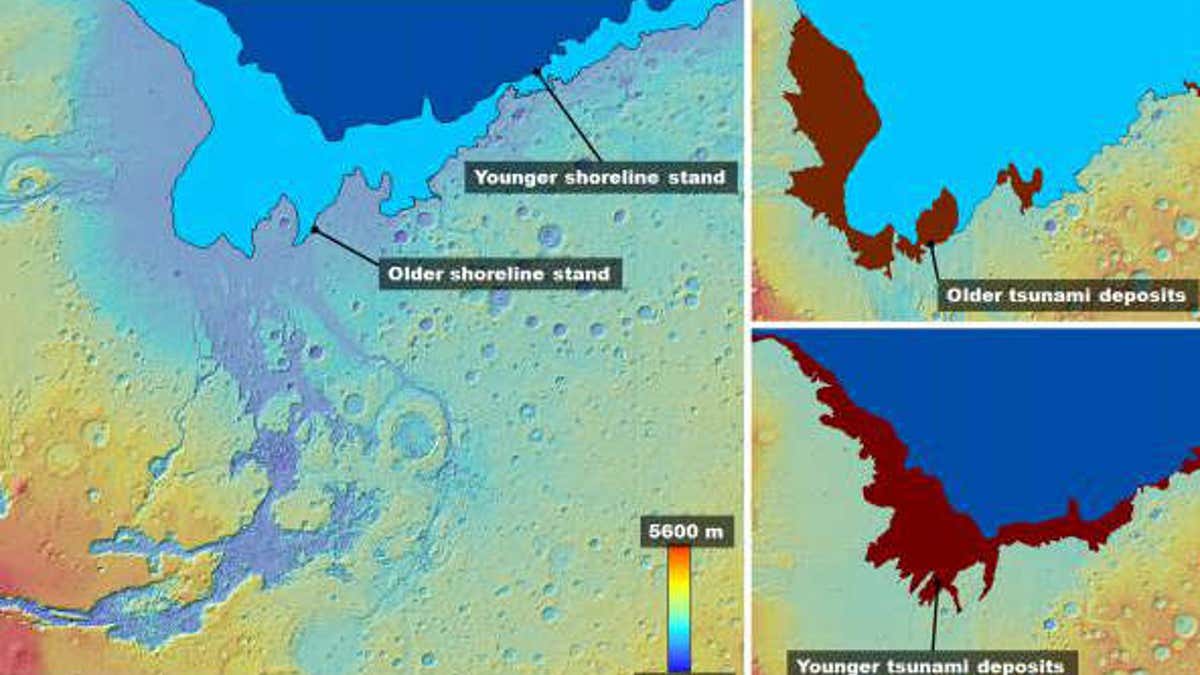
(Planetary Science Institute)
Scientists in Arizona revealed in a new report Thursday that two mega tsunamis, nearly 400 feet high, wiped away ancient Martian shorelines approximately 3.4 billion years ago.
According to a new published paper in Nature Scientific Reports by Planetary Science Institute, senior scientist J. Alexis Palmero Rodriguez said some kind of bolide impact triggered the enormous waves and completely wipeout any kind of shoreline features which scientists have been struggling to identify.
“For more than a quarter century, failure to identify shoreline features consistently distributed along a constant elevation has been regarded as inconsistent with the hypothesis that a vast ocean existed on Mars approximately 3.4 billion years ago,” Rodriguez said.
“Our discovery offers a simple solution to this problem; widespread tsunami deposits distributed within a wide range of elevations likely characterize the shorelines of early Martian oceans,” he added.
The study comes after NASA announced last September that there was flowing liquid located on the Red Planet.
Rodriguez and one of the paper’s co-author Thomas Platz concluded the tsunamis occurred millions of years apart. The scientists revealed that during the time period between the two tsunamis, the ocean receded and caused Mars’ climate to become drastically cooler. Evidence shows the latter tsunami was primarily made of water-ice.
The study suggests that further sampling of the areas will likely find frozen ancient ocean water brines and may obtain “much of the originally emplaced materials, which could be informative of the ocean’s primary composition.”
Scientists believe that the Mars Pathfinder will be able to test the materials, given its proximity to the rover’s landing site.
“We have already identified some areas inundated by the tsunamis where the ponded water appears to have emplaced lacustrine sediments, including evaporites. As a follow-up investigation we plan to characterize these terrains and assess their potential for future robotic or human in-situ exploration,” Rodriguez said.
